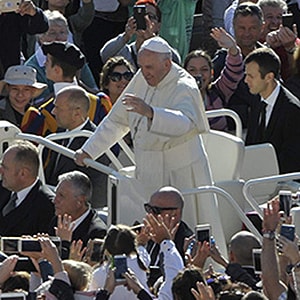
Love of God and neighbour at heart of Week of Prayer
By Christopher Wells
For more than fifty years, the Catholic Church has joined with other Christian communities in the initiative of the Week of Prayer for Christian Unity (WCPU).
Each year in January – beginning on the 18th and concluding on the feast of the conversion of St Paul, January 24th – Christian churches and ecclesial communities observe the Week of Prayer for Christian Unity.
Following on the ecumenical impulse provided by the Second Vatican Council, in 1966 the fledgling Secretariat for Promoting Christian Unity (which evolved into the Dicastery of the same name) began working with the World Council of Churches’ Faith and Order Commission to prepare materials for the annual Week of Prayer.
Just a few years later, in 1975, local ecumenical communities were first given the task of coming up with the resources for the week.
The theme for this year’s Week of Prayer is “You shall love the Lord your God… and your neighbour as yourself”, and is focused on the parable of the Good Samaritan. The materials for this year’s Week were prepared by an ecumenical team from Burkina Faso, assisted by the local Chemin Neuf Community.
A persecuted Christian community
“It’s a week in which we are praying for the same cause, which is Christian unity, but it is inspired by a community, a local community,” says Monsignor Juan Usma Gomez, the head of the Western Section of the Dicastery for Promoting Christian Unity.
Located in West Africa in the Sahel region, Burkina Faso’s Christian community comprises around 20% of the population. The majority of the country, around 64%, adheres to Islam, while some 9 percent of the population follows traditional African religions.
“This year it is an African community, a persecuted Christian community, a minority Christian community in a very difficult situation,” says Mons Usma Gomez. “Burkina Faso is going through a most difficult situation of persecution, violence, and inter-religious situations that are quite complicated.”
Nonetheless, he adds, “Perhaps the most important thing is that a persecuted minority Community is inviting us to pray for love, loving our neighbors, loving all those who are near to us, inspiring the Good Samaritan passage.”
In the footsteps of the Fathers
Monsignor Usma Gomez explains that with the choice of the Gospel account of the Good Samaritan, the organizers “are trying to inspire us by giving us not only the way in which Africans are living, the way of receiving one another, but also is trying to connect with the reflections of the Fathers of the Church.”
The Church Fathers, he continues, “gave you the idea of the text” by explaining who each of the characters represents. The Samaritan represents Christ, for example; the man who is robbed and left for dead represents “Adam” or humanity; and the inn where the victim is received represents the Church, “the Church that needs to adopt the loving care for everyone,” no matter their religion, people, race, or community.
Thank you for reading our article. You can keep up-to-date by subscribing to our daily newsletter. Just click here







